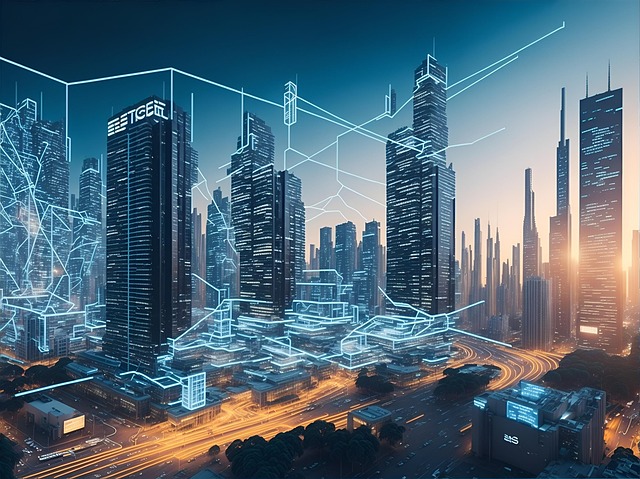AI drone-based lot imaging and classification are transforming property management by providing efficient, high-resolution aerial insights into land plots via advanced AI algorithms. This technology identifies and classifies features like buildings, open spaces, and parking areas, aiding in access control system design and optimized space utilization. Integration with facial recognition technology enhances security, allowing swift identity verification using stored databases. AI-powered mobile home security systems offer enhanced peace of mind through precise intruder detection and remote management via smartphone apps. Continuous advancements aim to improve accuracy rates, enhance data encryption, integrate with smart homes, and provide tailored protection within sophisticated security systems.
“Explore the future of mobile home security with AI drone-based lot imaging and classification systems. This innovative technology enhances access control through precise facial recognition, offering unparalleled accuracy and convenience. The integration of these advanced features into mobile home communities promises enhanced safety and efficiency.
This article delves into the functioning of AI drones in capturing and classifying images, discusses the implementation of facial recognition in access systems, highlights its benefits and challenges, and glimpses into the exciting prospects that lie ahead for AI-powered mobile home security.”
- Understanding AI Drone-Based Lot Imaging and Classification: How it Works
- Integrating Facial Recognition Technology into Mobile Home Access Systems
- Benefits, Challenges, and Future Prospects of AI-Powered Mobile Home Security
Understanding AI Drone-Based Lot Imaging and Classification: How it Works

AI drone-based lot imaging and classification are transforming property management by offering a sophisticated and efficient way to assess and organize land plots. Drones equipped with high-resolution cameras and advanced AI algorithms can swiftly capture detailed aerial images of residential or commercial properties, providing a comprehensive view from above.
Through machine learning techniques, these drones identify and classify various features within the lot, such as buildings, open spaces, parking areas, and landscaping. This technology enables quick analysis of property layouts, aiding in accurate access control system design by identifying entry points and potential security risks. The detailed insights generated facilitate informed decision-making for better space utilization and enhanced overall management.
Integrating Facial Recognition Technology into Mobile Home Access Systems

The integration of facial recognition technology into mobile home access systems presents an innovative and secure solution for community management. By leveraging AI drone-based lot imaging classification, these systems can accurately identify residents and authorized visitors, enhancing safety and accessibility. This advanced technology captures high-resolution images from aerial drones, which are then processed using machine learning algorithms to create detailed facial maps.
Such systems offer a seamless experience for homeowners while maintaining stringent security protocols. When a resident or visitor approaches the mobile home, the facial recognition software swiftly verifies their identity against the database stored within the system. This real-time validation ensures that only authorized individuals gain entry, deterring unauthorized access and potential security threats.
Benefits, Challenges, and Future Prospects of AI-Powered Mobile Home Security

Benefits of AI-Powered Mobile Home Security
AI-driven facial recognition access systems offer unprecedented security for mobile homes, enhancing residents’ peace of mind. By leveraging advanced algorithms and drone-based lot imaging classification, these systems can accurately identify authorized individuals, deter unauthorized entry, and record intrusions. The integration of artificial intelligence also enables efficient management of multiple access points, allowing homeowners to control who enters their property remotely via a smartphone app. This level of control and convenience is especially beneficial for those who frequently travel or require secure access for service providers.
Challenges and Future Prospects
Despite its advantages, AI-powered mobile home security faces challenges related to privacy concerns, potential bias in facial recognition algorithms, and initial setup costs. However, continuous advancements in AI drone-based lot imaging classification promise to address these issues. The future of this technology lies in improving accuracy rates, ensuring data privacy through robust encryption and anonymization techniques, and integrating with smart home ecosystems for a seamless user experience. As AI continues to evolve, mobile home security systems are poised to become even more sophisticated, offering tailored protection and enhanced living environments for their occupants.
The integration of AI drone-based lot imaging and classification with facial recognition technology in mobile home access systems offers significant enhancements to security. This innovative approach combines advanced analytics, precise property mapping, and efficient user identification, ensuring safe and streamlined entry. While challenges such as privacy concerns and technological limitations exist, ongoing advancements suggest a promising future for AI-powered mobile home security, potentially revolutionizing how we protect our living spaces. As this technology matures, it may become the norm, providing residents with enhanced peace of mind and convenience in their homes.
